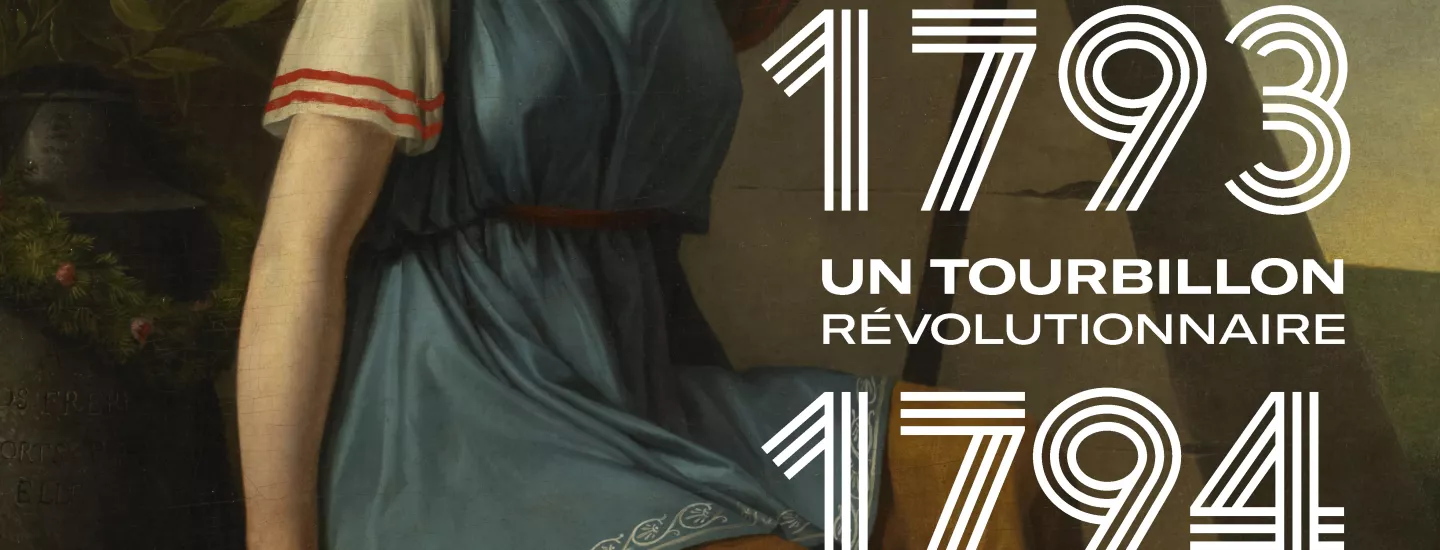
1.3 | Celebrating the young Republic
Revolutionary symbols and festivals
Establishing the Republic required the deployment of new imagery and major ceremonies, to replace the symbols of the old monarchical regime.
The first representations of the French Republic, such as the allegory painted by Jean-Baptiste Wicar for an embassy in Florence, took the form of an armed woman who was both protector and nurturer. In addition to the Phrygian cap symbolising freedom and the three colours blue, white and red, the fasces she holds represents the unity and strength of the citizens. This visual theme was quickly deployed for use in places of power and during revolutionary celebrations. On 10 August 1793, the Festival of Unity and Indivisibility commemorated the first anniversary of the fall of the monarchy on Place de la Révolution (now Place de la Concorde in Paris). The decor, which was as dramatic as it was ephemeral, was designed by the painter and assemblyman for Paris, Jacques-Louis David. Grenoble also celebrated this anniversary on what is now Place Grenette, which had been renamed “Place de la Liberté”.